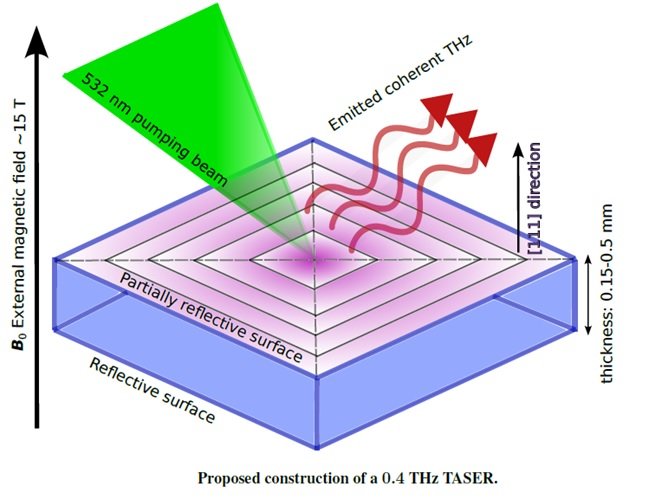News feed
BME Researchers Develop a Novel Terahertz Light Source Using Diamonds
2024. 09. 02.
The results open up new possibilities in medical diagnostics and security screening, among other fields.
The terahertz range of the electromagnetic spectrum—wavelengths longer than infrared light but shorter than microwaves—is crucial for the advancement of numerous technological fields, as it uniquely allows for the examination and manipulation of materials at the molecular and atomic levels. Terahertz waves can penetrate materials such as plastics, textiles, and even biological tissues without causing damage, making them indispensable in imaging, spectroscopy, national security, and material characterisation. Additionally, they are vital in the development of high-speed wireless communication systems and quantum computing technologies.
However, generating and controlling terahertz (THz) radiation presents a significant technical challenge due to the so-called ‘THz gap’. This refers to the range of the electromagnetic spectrum between microwave and infrared regions where traditional techniques become increasingly less effective. Bridging the THz gap typically requires complex and expensive equipment, such as high-powered lasers and specialised nonlinear materials. Consequently, THz light sources are rare and difficult to develop, making efficient and accessible THz technology a critical area of research.
Nitrogen and diamond
This is especially true for coherent THz sources, which behave similarly to lasers, emitting nearly monochromatic photons with similar properties. Due to their similarity to lasers, these sources are known as TASERs (Terahertz Amplification by Stimulated Emission of Radiation), though they are unrelated to the devices with the same acronym used in law enforcement.
Researchers from the Budapest University of Technology and Economics (BME), the HUN-REN Wigner Research Centre for Physics, the University of Notre Dame in the United States, and the École Polytechnique Fédérale de Lausanne in Switzerland have addressed this problem by exploring new materials. In their study, they demonstrated that nitrogen-doped diamonds can create an energy structure under the influence of a strong magnetic field and external optical irradiation, which exhibits a laser-like phenomenon known as population inversion, providing evidence of coherent terahertz radiation emission.

Diamond, known for its stability and resistance to environmental effects, has become increasingly used in the past decade as an element for storing and transmitting quantum information. The researchers hope that the system they have developed could not only lead to new terahertz light sources but also serve as a building block for future quantum optical networks. According to Ferenc Simon, leader of the research and university professor of the Department of Physics at the Faculty of Natural Sciences, the use of synthetic diamonds—common in industrial applications—will not increase the cost of practical applications significantly.
In response to our inquiry regarding practical applications, he explained that while further experiments are necessary following their foundational research, it is certain that
generating and manipulating terahertz waves will open up new opportunities in medical diagnostics and security screening.
The article, published in Science Advances, was the result of international collaboration, though all of the authors are Hungarian (Sándor Kollarics, Bence Gábor Márkus, Robin Kucsera, Gergő Thiering, Ádám Gali, Gergely Németh, Katalin Kamarás, László Forró, and Ferenc Simon. The first author, Sándor Kollarics, recently earned his PhD from the Doctoral School of Physical Sciences at BME’s Faculty of Natural Sciences.
Rector's Office Department of Communications
